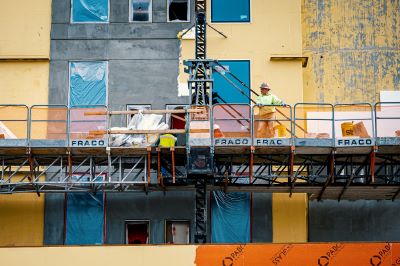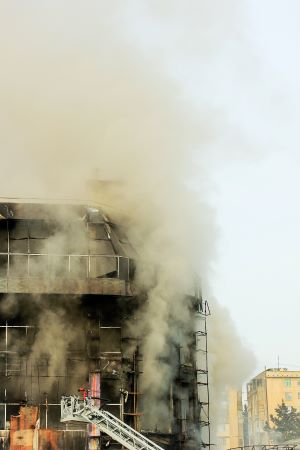SafeSite Facilities can help to protect your site against fire
 Fire poses a constant and significant risk on construction sites throughout the United Kingdom. This risk is amplified by activities like electrical work, soldering, and welding, often carried out amidst a wealth of flammable materials with limited escape options. This danger can be increased when adequate passive fire protection is lacking in new or modified buildings.
Fire poses a constant and significant risk on construction sites throughout the United Kingdom. This risk is amplified by activities like electrical work, soldering, and welding, often carried out amidst a wealth of flammable materials with limited escape options. This danger can be increased when adequate passive fire protection is lacking in new or modified buildings.
However, the majority of fires on construction sites are avoidable through vigilant risk assessment, basic precautions, and strict adherence to regulations and industry standards.
SafeSite Facilities can help to prevent or reduce the risk of fire on your site by offering services such as CCTV, hoarding and fencing to keep out potential arsonists and waking watch patrols.
Legal Framework for Construction Site Fire Safety

The primary legislation governing fire safety on construction sites in the UK can be referenced in full here. The Construction (Design and Management) Regulations of 2015 (CDM Regulations) also outline specific responsibilities, including the duty to prevent hazards. It is crucial to assess the potential fire hazards arising from construction activities and implement effective measures to mitigate these risks:
- Flammable Substances: Minimise the presence of combustible materials and handle them responsibly to prevent fire.
- Ignition Sources: Take proactive steps to eliminate, minimise, and monitor potential ignition sources. Extra precautions are essential when using wood construction methods.
- Relevant Risks:
- Temporary Lighting: Ensure lighting devices are positioned away from flammable materials and have time to cool down. Avoid high-temperature lighting sources such as halogen lamps.
- Hot Working: Only qualified personnel should perform hot work, and safer alternatives should be considered. Clear the area of combustible substances before starting hot work.
- Electrical Faults: Regularly test and inspect all electrical systems, including both permanent cabling and generator-based power sources. Portable Appliance Testing (PAT) should be standard practice.
- Arson: Strictly regulate site access and supervision to minimize the risk of arson. Proper waste management prevents easy ignition points.
- Combustible Materials: Limit the use of flammable substances to the necessary minimum. This includes timber, waste materials, and other combustibles used in construction.
- Waste Materials: Minimize and promptly dispose of waste. Develop efficient waste removal processes aligned with site policies. Avoid using plastic bins.
Potential solutions
- Monitored CCTV: Employ continuous surveillance through monitored CCTV during non-working hours. Portable CCTV units can be relocated to safeguard different areas.
- Site Fencing: Erect robust construction site hoarding to secure the premises and deter unauthorized access. Prevents arson and protects valuable equipment.
- Security Guards: Employ trained security personnel to maintain a physical presence on-site, especially during off-hours. Guards can deter arson, alert authorities in emergencies, and monitor proper storage of combustible materials.
Overall, a proactive approach to construction site fire safety involves a combination of regulatory compliance, risk assessment, preventive measures, and consistent monitoring. This multi-faceted strategy minimizes the risk of fires, protecting both construction assets and human lives.
Contact SafeSite Facilities today to discuss your requirements and we can help you decide the best option.
















